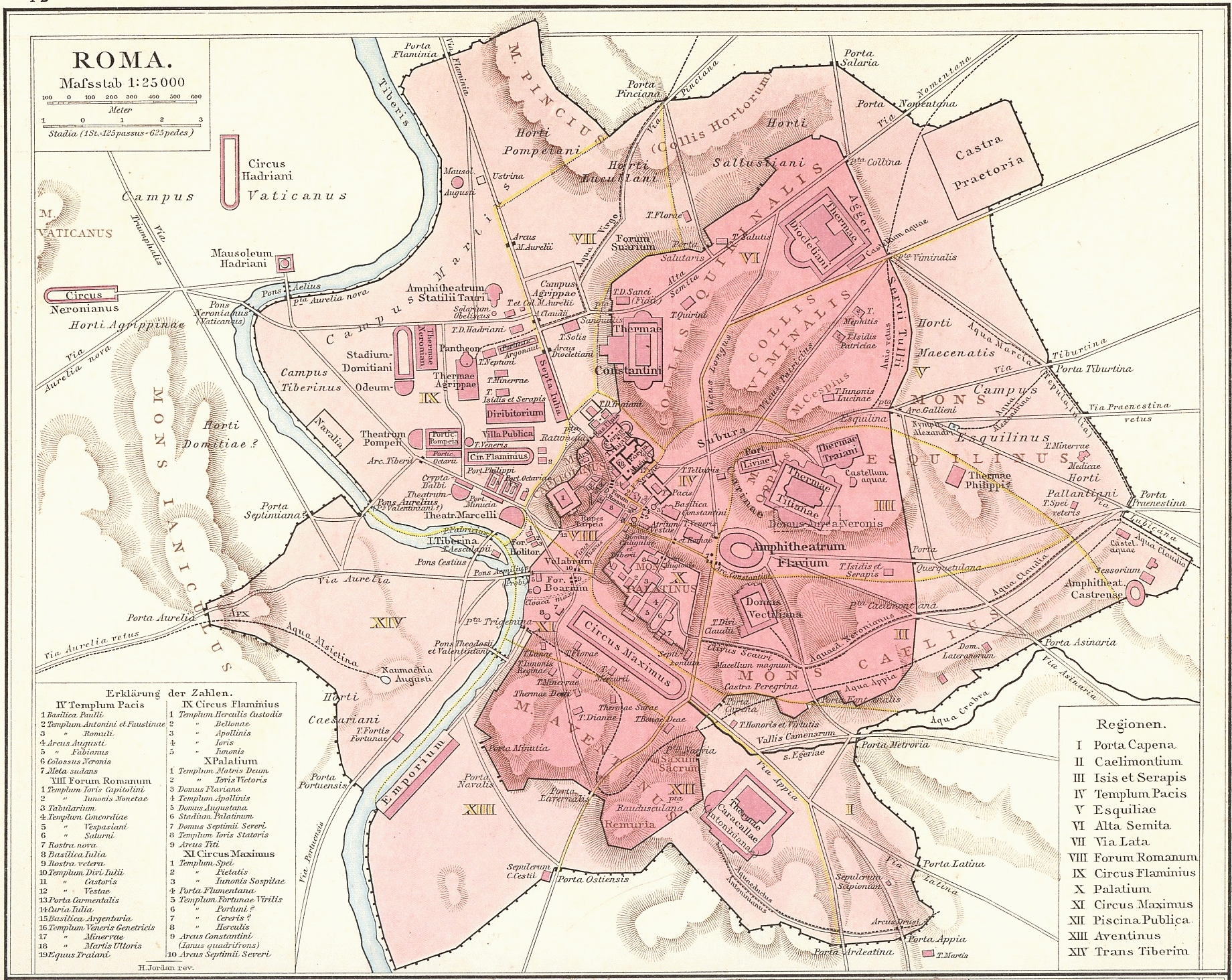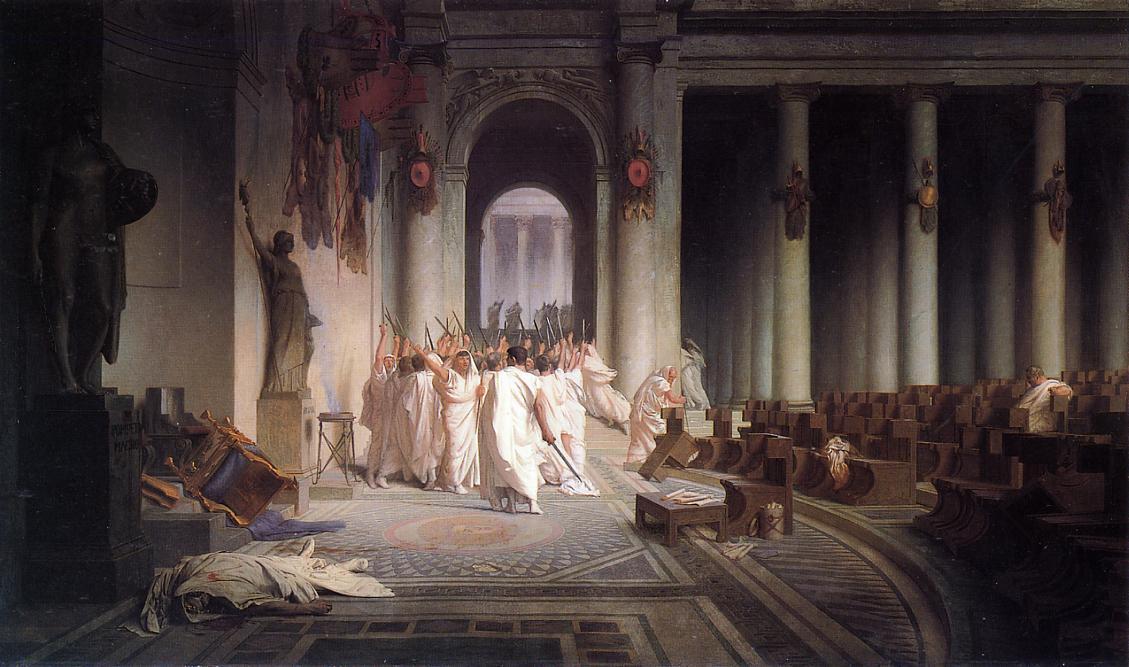I'm postponing my second Siena post until tomorrow because today is—dun, dun, dun—the Ides of March. Which really just means it's March 15th. The Ides themselves aren't particularly ominous since every month has an "Ides" according to the Roman calendar.
The Roman calendar had three fixed days in each month named Kalends, Nones, and Ides. The exact date on which they fell in each month originally varied because it was based on lunar cycles. Later, the dates became fixed.
Kalends was the date of the new moon and became the first day of the month. Nones fell on the day of the "half moon" but became the 9th day before the Ides. And, finally, the Ides was probably the date of the full moon but became somewhat fixed as the 15th of March, May, July and October and the 13th of all the other months.
Before the year 153 BCE, the Ides of March was also the start of a new year and even included a celebration for the goddess of the new year, Anna Perenna. Get your wine and party hats out!
I, for one, think this makes way more sense than starting a new year in January when it’s cold and miserable. The Vernal Equinox is close and spring represents a rebirth and the beginning of the growing season.
But no. And do you know why? Any guesses? Politicians, perhaps? Of course!
According to this article, Rome couldn’t keep control over an outlying province and they wanted to elect new Consuls so they could take care of it. The only problem was that it was around December and elected Consuls started on the first day of the new year, the Ides of March. So they bumped the new year up to the Kalends of January.
Fantastic.
The next time you’re freezing your arse off because someone thought it would be “fun” to pack into a square with thousands of others and watch some silly ball drop at midnight, you can blame ancient Roman politicians.
So, as you can see, there’s no real need to beware the Ides of March.
Unless of course a soothsayer tells you to beware them. In that case, it wouldn't hurt to watch your back. Especially if your name is Julius Caesar and the year is 44 BCE.

I won’t go into all the fiddly details here because there are lots of places in print and online for that. The short version is that tension had increased between Caesar and the senate for some time over Caesar’s growing power. A group of senators plotted his assassination and carried it out on this fateful day thousands of years ago.
As the story goes, Caesar was on his way into the Theater of Pompey to meet with the senate because the senate building in the forum was under construction. As he entered the theater, a soothsayer stopped him and warned him that he was in grave danger on the Ides of March.
Caesar pointed out that the day had already arrived and he was still ok. The soothsayer answered back that although the day had come, it had not yet passed.
This is where the famous line from Shakepeare’s play, Julius Caesar, comes from:
Caesar: Who is it in the press that calls on me?
I hear a tongue shriller than all the music
Cry “Caesar!” Speak, Caesar is turn’d to hear.
Soothsayer: Beware the ides of March.
Act I, Scene II
Once inside, Caesar sat down. One of the senators, Tillius Cimber, immediately came forward with a petition to bring his brother back from exile. The senators involved in the assassination plot gathered around them closely, offering their support of Cimber.
Cimber then reached out and pulled at Caesar’s tunic. Caesar cried out “Why, this is violence!” just as another senator attempted to stab him. The rest of the group quickly joined in and began stabbing at Caesar. By the time Caesar was dead, he had a total of 23 stab wounds.
In Shakespeare’s play, Caesar’s famous last words are “Et tu, Brute?—Then fall, Caesar!” as his best friend, Marcus Brutus, stabs him.
In actuality, there does not seem to be a consensus about what he said just before he died. Suetonius wrote that he said nothing. Plutarch wrote that when he saw Brutus in the crowd of conspirators attacking him, he pulled his toga up over his head and fell to the floor as if resigning to his fate. I have also seen multiple mentions that Caesar reportedly said a Greek phrase to Brutus: “Kai su, teknon?” which means “You too, child?” Perhaps this is the inspiration for Shakespeare's famous line.
And so ended the lives of one of the most famous and, perhaps, infamous leaders in history.
Today, you can visit what is left of the ruins of the Theater of Pompey. They are located in a square in Rome called the Largo di Torre Argentina, which is south of the Pantheon and between Campo dei Fiori and the Forum. Only a small part of Pompey’s theater is visible on the west side, amidst the ruins of four other temples from different centuries of Rome's history. Apparently the actual spot of Caeser’s assassination is located somewhere in the square.
For some reason these ruins are one of my favorite spots to visit in Rome. They aren’t particularly grand but they do have quite a story behind them. There’s something about how I always seem to end up stumbling on the square while on the way to somewhere else, seeing the ruins, and then getting hit by this feeling of “Wow, this is where Caesar died.”
I think in part of why I love this square is because it has always been quiet when I’ve seen it. People seem to walk on by without stopping. It is one of the places where the past quietly meets the present. Real life isn’t drowned out by tourists flocking to a site. Rome seems to offer so many of these opportunities.
Here’s a video, for example, showing that part of the Theater of Pompey is now in a restaurant called Da Pancrazio:[youtube=http://www.youtube.com/watch?v=6IxQ5MH87x4]
I'm also fond of the square because it houses the Torre Argentina Cat Sanctuary, a no-kill shelter for Rome’s homeless cats. I remember figuring this out for the first time in 2001. I was leaning over the railing going “Oh, look! A cat. . .another cat. . .and another? Um. There’s lots of cats here, what’s the deal?” They all look really well cared for each time I’ve been by the ruins. It just seems like a smart idea to use an open space like this for that purpose.
If you can somehow orchestrate a way to stumble on this place, that’s the way I’d recommend seeing it. Rome has a wonderful way of surprising you with the abundance of its ancient sites if you let it.




